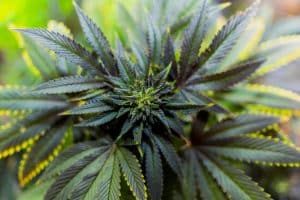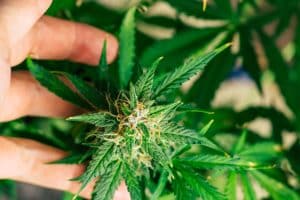Free Tropical Runtz seeds on orders over $150!
Knowing the cannabis plant and enjoying its pungent offerings requires understanding its distinct characteristics. The calyx, or flowering top of the cannabis plant, is the subject of this in-depth tutorial. This is the most resinous section of the plant and the engine that drives bud development. They are the cannabis plant’s primary reproductive structure and are responsible for enclosing the flower.
In addition to providing us with delicious cannabis, calyxes provide important information about the sex, health, and growth stages of plants. Understanding them allows us to avoid typical farming errors and produce abundant, sticky yields. Let’s start on this fascinating adventure of discovering weed calyxes, why they’re so important, and how to tell them apart from other plant structures.
Finding out how plants work is both fascinating and useful. Learning about calyxes is a great way to broaden your expertise. You will thoroughly understand calyxes, including their structure, development, and role in the plant.
What exactly is a cannabis calyx? It’s the first flowering stage’s foundational elements of the buds. A cluster of small leaves called “sepals” seems to grow where the bud joins the stem. The sepals, which are elongated triangles, are spiraled around the flowers. The pre-flowering stage is the most vulnerable, and the calyx “envelops” the developing bud to protect it. Therefore, the calyx serves primarily to shield the cannabis flower’s reproductive parts (pistils) and provide a sturdy foundation for growth.
The Latin term “calyx” derives from the Ancient Greek meaning “bud case” or “husk.” The calyx of a cannabis plant does more than produce the flower; it also protects the developing pistils and trichomes. Pistils develop from calyxes and serve as reproductive organs. Stigmas are the white hairs that are used to collect pollen. The ovaries inside of them produce the next crop of seeds.
Additionally, the calyx of a cannabis plant is what produces the seeds once the plant has been fertilized. Unfertilized plants eventually develop yellow, orange, and brown pistils. Moreover, trichomes are resin glands that produce and store the plant’s active compounds, including cannabinoids, terpenes, and flavonoids. They appear on and around flower sites, but the calyxes are where you’ll find most of them.
Learning more about the calyx and its components will help your development path. Notably, it has substantial links to the vitality, sexuality, and maturity of the plant. When trying to figure out whether or not a cannabis plant is male or female, the pistils are your best bet. They aid in the early detection of stray males, lowering the likelihood of pollination and the subsequent potential for seed production in your blossoms.
The presence of spherical pollen sacs at the nodes is an early indicator of a male plant. They droop and burst open to pollinate nearby plants. The calyx expands and opens in female plants, revealing the pistils within.
You may examine weed calyxes to monitor plant health as blossoming occurs. A lack of nutrients, insect infestations, or environmental stresses may cause unhealthy and deformed calyxes. Please don’t allow this problem to reduce yield because you waited too long to identify it.
In addition, you can determine when it’s time to harvest cannabis by looking at the pistils, particularly the stigmas. They take on a yellowish hue after the first four to five weeks. When the buds have developed their characteristic orange hairs, they are at their most potent, and the calyx grows in size when this occurs.
Sometimes, during cultivation, a cannabis plant’s calyx can swell, which can be easily recognized by the grower. This enlargement indicates that the plant produces resin abundantly, so it’s ready to be harvested. It is also important to note that a swollen calyx is sometimes misunderstood as a pollinated calyx, which is a calyx that has been fertilized by pollen and will generate seeds.
A calyx that has been pollinated should not be confused with the pollen sacs that surround it. When the calyx is fertilized, the plant is considered female and will produce seeds. On the other hand, a male cannabis plant will produce pollen sacs. In place of flower buds, male plants create pollen sacs from which pollen is transferred to the female plants to fertilize them. These pollen sacs stand out from the calyx, which has the form of a teardrop, by resembling a cluster of grapes.
The less leaf area there is on each bud, the more weed you’ll harvest and the less pruning you’ll have to do. It holds whether you’re talking about calyxes, fan leaves, sugar leaves, sepals, twigs, or trichomes. That’s why the ratio of calyx to leaf is so important.
Different structures cover the branches of cannabis plants as they mature. The tiny petals that make up the calyx of a weed flower serve to shield the developing bloom’s vulnerable bud. Between the flowering regions, large weed leaves develop to absorb sunlight and power the plant. Smaller sugar leaves cluster around the bud to shield the developing flower and collect trichomes.

On harvest day, you cut the branches off the main stem, remove the fan leaves, and prune the buds’ surrounding foliage. This method ensures that each flower has the time to dry and cure, resulting in a smoke that is both smooth and potent.
The sugar leaves might be a pain to eliminate, but the fan leaves are a breeze. Because of this, the weed’s leaf-to-calyx ratio is significant. Why is this proportion so important, and what does it mean?
How many calyxes there are in comparison to sugar leaves is known as the “calyx-to-leaf ratio” of a cannabis plant. The higher it is, the more buds there are on the plant compared to the foliage; the lower it is, the bushier the crop and the fewer the flowering sites.
This variable number is based on factors like plant genetics, growth conditions, and your pruning and training methods. A high “calyx-to-leaf ratio” is preferred by farmers because it predicts abundant harvests with less pruning effort.
Your cannabis plant genetics will somewhat determine the number and size of the calyxes on your plants. Selective breeding has resulted in modern strains with favorable development characteristics, such as a high calyx-to-leaf ratio. These days, you can purchase and cultivate strains like Master Kush and Fire OG that have a high calyx-to-leaf ratio and, hence, need less pruning.
Here are some examples of strains with a high calyx-to-leaf ratio:
While genetics is undoubtedly important, it is not the sole factor determining how thick your nugs will be. The greatest results will come from regularly pruning the plants, providing enough light, and feeding them properly.
The optimal time to harvest is when the weed’s calyx swells. However, the phenomena may be difficult to identify since it may mimic the pollen sacs of hermaphrodites. A plant’s maximal maturity may be identified by its enlarged calyxes. The tufts at their ends give the impression that they are solid. At this point, crystalline flowers are common.

In contrast, hermaphroditism occurs when a cannabis plant creates both male and female reproductive structures. Male pollen sacs and stress-related or nutrient-burn symptoms are the most obvious telltale indicators of a hermie.
So, what distinguishes these two scenarios? Several important signs include:
Female flowers are represented by calyxes at the flower’s nodes, with pistils around them. The pollen sacs of hermaphrodites are often located on different branches.
Swollen calyces make the buds fluffy because of their spherical, bulbous shape. Clusters of pollen balls that lack sugar leaves are called pollen sacs.
The calyxes have small hairs sticking out of them, and the pollen sacs don’t have any pistils.
Flowering begins before the calyxes have fully expanded. Pollen sacs develop later in the life cycle when plants are subjected to severe stress.
Taking images of the calyx as it develops allows you to tell the difference between these states of affairs. When they expand progressively, you may breathe easily. If balls appear on previously vacant nodes, move the hermie out of the garden to prevent pollination.
The calyx of a weed is an important structural organ. It’s a defense mechanism allowing budding, reproduction, and accumulating sticky resin in the buds. If you know what it is, you can use it more effectively. The more you know about calyxes, the more options you’ll have for your garden. It guides you in making the most informed decisions about everything from training methods to bud growth to plant maintenance.





Offers
This product is not for use by or sale to persons under the age of 18. This product should be used only as directed on the label. It should not be used if you are pregnant or nursing. Consult with a physician before use if you have a serious medical condition or use prescription medications. A doctor’s advice should be sought before using any hemp products. All trademarks and copyrights are property of their respective owners and not affiliated with nor do they endorse this product. These statements have not been evaluated by the FDA. This product is not intended to diagnose, treat, cure or prevent any disease. By using this site you agree to follow the Privacy Policy and all Terms & Conditions printed on this site. All products contain less than 0.3% Cannabinoid-compliant with applicable Federal Laws. Please make yourself aware of any and all applicable laws regarding hemp in your jurisdiction. Premium Cultivars accepts no liability or responsibility regarding germination laws in any specific locale state or national jurisdictions.THCA products are not available for shipment to the following states: Hawaii, Idaho, Minnesota, Oregon, Rhode Island, Utah, Vermont *Note: Products with Total THC content above 0.3% must not be shipped to these states.
We want to help you get your hands on the seeds you want, take 20% off your next purchase when you enter your email below!
We want to help you get your hands on the seeds you want, take 20% off your next purchase when you enter your email below!